Gender has been a hot news topic for a while now, whether it's a store mixing the pink and blue toys together to encourage kids to shop by general interest instead of culturally enforced gender norms or celebrities being more honest and open about their non-binary and trans lives. I think, for most of us, gender has always been on our mind, policing our behavior or causing us some level of distress as we either agree or disagree to go along with the vague, yet somehow rigid rules of our culturally dictated gender norms. Thats the real kicker isn’t it? What values are attached to traditional ideas of masculine and feminine have changed countless times over every culture based on the needs or values of the culture at that time.
It has been a tool of society and not an actual reflection of the individuals living within it. It has never been easy to define, because it isn’t quantifiable or objective. As our world gets more and more interconnected and ideas spread at bandwidth speeds, it becomes increasingly clear that there is no necessary gender script. Hidden beneath the surface there never was. It has always been more of an idea that provided order and comfort to those who need everything to be clearly defined and neatly packaged. But packaging is confining and limiting. Running one's life based on imaginary ideas of gender expectations stops many from reaching their potential, pursuing things they are naturally suited for, and feeling comfortable in their own skin.

I’ve never had a comfortable relationship with gender norms and although I identify as a woman, I don’t identify with most of the accompanying baggage that is supposed to come with womanhood and femininity. My personal feelings collided with my photography when my little sister began her own journey, at twelve, with what it meant to be a woman when you don’t fit the mold. As she began to enter adolescence she was diagnosed with a rare, rapid acting disease of the breast tissue that resulted in a double mastectomy within nine months.
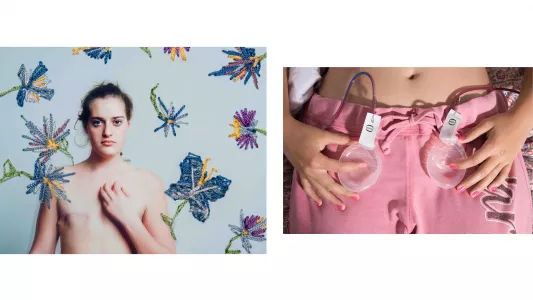
Over the last nine years I have worked with her to document the physical and mental toll of the multiple surgeries and development of her identity with an ever changing physical appearance. The constant question being, how do I fit as a breastless woman? When she was still quite young, she asked me, “can I go topless at the beach since I don’t have breasts?”. Really what she was asking is, now that her “offensive” breasts are gone can she enjoy some of the freedom that men enjoy or does her womanhood mean she can’t? It is not an easy answer. More and more in our collective online culture these gender lines are being crossed, challenged and exposed for the farce that they are.
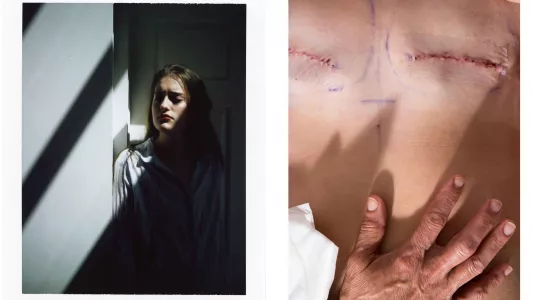
Photographers are playing a key role in helping people explore their own gender expressions regardless of their genitalia or geography. Through portraiture people are able to control, explore and express who they are despite the outside factors usually informing how they are interpreted. It is powerful to be able to look at an image of yourself and see what you feel reflected back.
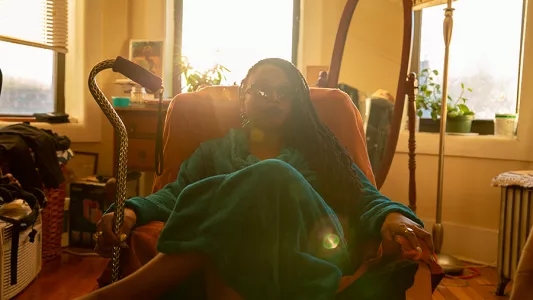
In 2012 Chloe Aftel (@chloeaftel) became interested in the genderqueer movement both with genuine interest in the freedom its ideas represent and the senseless violence that being gender nonconforming can attract. A year after photographing teen Sasha Fleischman on assignment, Sasha survived being set on fire by another teen on a bus, because of how they were dressed. After the event Chloe began photographing people living more freely along the gender spectrum. The threat of violence faced by those who challenge the polarity of gender norms is a sad and telling reality of the power cultural expectations, no matter how abstract they are, have on us. Chloe shot Genderqueer in locations that were meaningful to the subject, often in their own homes.

The approach is very successful in showing her subjects in a casual way, driving home the point that our gender expression doesn’t change our humanity or value. It doesn’t somehow detract from the same boring reality we all exist in filled with stress, routines and jobs. It is equalizing in an important and poignant way that contradicts a lot of the knee jerk assumptions that people tend to hold when they hear non-binary/gender non-conforming/genderfluid. You don’t have to be a traditional gender stereotype to be a contributing, thriving and important member of society. That’s the truly dangerous pill we are all told to choke down after our grammable gender reveal cake is sliced.
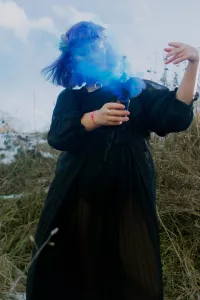
Canadian based photographer Laurence Philoméne (@laurencephilomene) has been exploring various aspects of gender from multiple angles in their work, from documenting their own transition as a non-binary transgender person to documenting other non-binary and gender non-conforming youths. Laurence started the project with a desire to more accurately represent their community by shifting “the gaze of cisgender photographers profiting off transbodies, and to create a body of work that is rooted in care”. The portraits are a collaboration striving to make an image that expresses their ideal self representation.
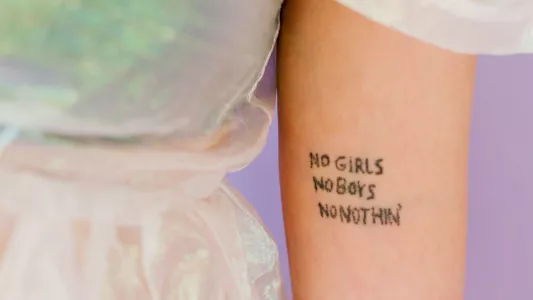
Laurence describes the work as “a love letter to the people that I photograph: showing the beauty that I see in them, and what it is about their existence that inspires me”. Laurence’s love and attention to the subjects are clear in the photographs, which are bursting with color, tenderness and personality. It is easy to see why these photographs would be meaningful to the subjects often showing their humor, creativity, beauty and humanity. Often the portraits are closer crops, giving the viewer intimate access to the person which, along with the gentle lighting, creates a quick affection between the viewer and subject. The pictures make you smile, and that says a lot in a world where we are bombarded constantly with images. Perhaps more importantly, I was struck with how much love I felt the subjects had for themselves when I first viewed the work, and that is indeed a gift to have painted in light.

Lalla Essaydi is an American based multidisciplinary artist from Morocco whose work delves more deeply into the effects culture have on our ideas of gender. Her work, which often “combines Islamic calligraphy with representations of the female body, addresses the complex reality of Arab female identity” and draws on her Moroccan childhood. Lalla’s work is deeply complex and draws on the effects the interactions of Arab culture and Western culture have and had on her development as a woman. Her work, if boiled down to its essence, is the journey of a woman looking back on her girlhood with new eyes and understanding- a woman still in progress studying what has built her thus far. Her images are textural, laden with calligraphy and range from monochromatic to vividly colorful, often with the clothing of the female subject blending with the environment. Each image is heavy with a sense of immersion, visually connecting the relationship between environment and subject unavoidably. Often leaving a fine line between where the subject ends and the setting begins. The use of calligraphy, a traditionally male Islamic art that is usually inaccessible to women, in her images is paramount. By practicing calligraphy in henna, which is worn and applied only by women, she has brought the male and female worlds together.
By reclaiming the rich tradition of calligraphy and interweaving it with the traditionally female art of henna, I have been able to express, and yet, in another sense, dissolve the contradictions I have encountered in my culture: between hierarchy and fluidity, between public and private space, between the richness and the confining aspects of Islamic traditions.
Lalla Essaydi’s work is bountiful in visual beauty, emotional expression and the complexities interwoven between gender formation and culture. Lalla states that, "In my art, I wish to present myself through multiple lenses -- as artist, as Moroccan, as traditionalist, as Liberal, as Muslim. In short, I invite viewers to resist stereotypes."

These artists and their subjects play an important role in broadening our collective understanding of gender representation and expression. Like any rejection of culturally accepted ideas, gender non-conformity can be faced with violence, rejection, hostility, bias and descrimination. This is unacceptable. Supporting and sharing the lives of non-conforming people helps to normalize and bring awareness to this reality. It’s easy to forget that many of the things both traditional gender roles enjoy today were at some point off limits or radically different. Even our earliest gender color coding of pink and blue used to be reversed as pink was seen as a softer version of the stronger color red and blue was seen as more dainty and delicate. Before that we all wore white for the pragmatic reason that it was bleachable. You can thank 1940’s manufacturers for the modern gender color coding system that, in my opinion, has reached peak absurdity. It’s incredibly important for our own sense of self, peace of mind, and general life satisfaction to remember that the curated world around us is ever changing, fickle and lacking in authenticity. So bring your own authenticity and help provide a space for others to do the same.




